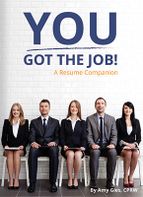Although there are laws in place to protect workers from discrimination, the reality is that age discrimination still exists, especially in a tight job market like we’ve been experiencing for quite some time now. Despite this unfortunate obstacle, there are a number of things that older professionals can do to “age proof” their resumes. Below we provide some tips for creating resume styles for older workers. These resume tips for older job seekers will help you bring the focus off of your age and on to the unique qualities you have to offer an employer.
Start With The Right Format
Generally you’re going to choose from three types of formats for your resume: chronological, functional, or a combination of the two. If you’re looking to change careers, then a functional resume may be the best solution. See our article on resume tips for career changers. Otherwise, an older candidate looking for a lateral move or promotional opportunity in the same functional area or industry will probably be best served by a combination resume, a hybrid of chronological and functional resumes. Why? A standard chronological resume for older workers can make them appear outdated, especially if they list 20+ years of prior job experience. The combination format allows you to show that you not only have relevant recent experience, but also have current skills needed in today’s competitive workplace.
Keep It Relevant
One obvious hurdle that an older job seeker will have to overcome is being regarded as “too old” by a potential employer. Another potential barrier is the stigma of over-qualification. One way to scale these obstacles is to make sure you are including only relevant information on your resume. With 20 or more years of job experience, chances are you were once using skills or performing activities that are no longer relevant in the job market. When editing your resume, leave those outdated items off of your current resume. They provide no current value, and only make you appear obsolete.
Limit the years of experience you list as well. If possible, it’s best to keep old experience off of your resume entirely, listing only the most recent 10 or 15 years of job history. If you believe it’s critical to put earlier jobs on your resume, include them in a separate section called “other experience,” and leave off the dates.
Use Years With Care
Absolutely include your education information on your resume, however, if your diploma or degrees are more than 10 years old, leave off your graduation years. If you have completed any certifications or other professional courses to update your skills in the last 10 years, be sure to include those, along with their dates. These indicate to an employer that you are keeping your skills up to date, and they might prove to be even more important than your degrees in helping you land that interview. If you have a college education, you can leave your high school information off of your resume.
If you have 20+ years of experience, leave this out of the career summary at the top of your resume as well.
Presentation Matters
How your resume looks and how you send it matters almost as much as what you put on the page. Ensure your resume format is not old-fashioned. If you’re still using an “objective” on the top of your resume, it’s definitely time to reformat your resume.
Unless the employer specifies a different method, be prepared to send your resume by email or to upload it online. While one might think it will get their resume noticed by avoiding the email and online clutter, in most instances mailing or faxing your resume will make you seem out-of-date.
Consider enlisting the help of a professional resume writer to help you polish your presentation. After all, your resume is the marketing document that will help you get an interview. If you’re not getting calls, it may be helpful to get an objective opinion from an expert.

